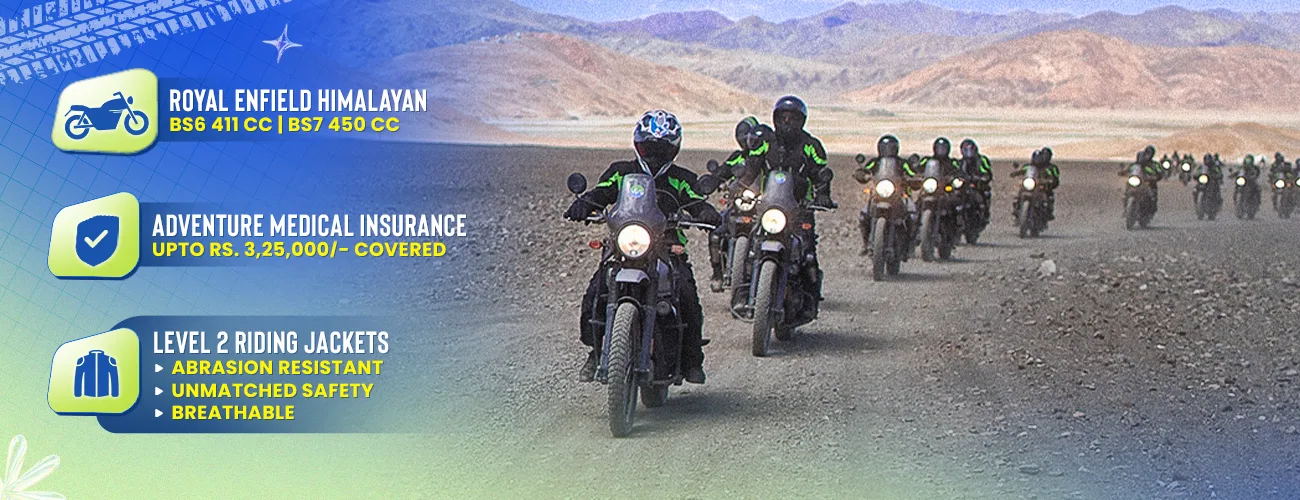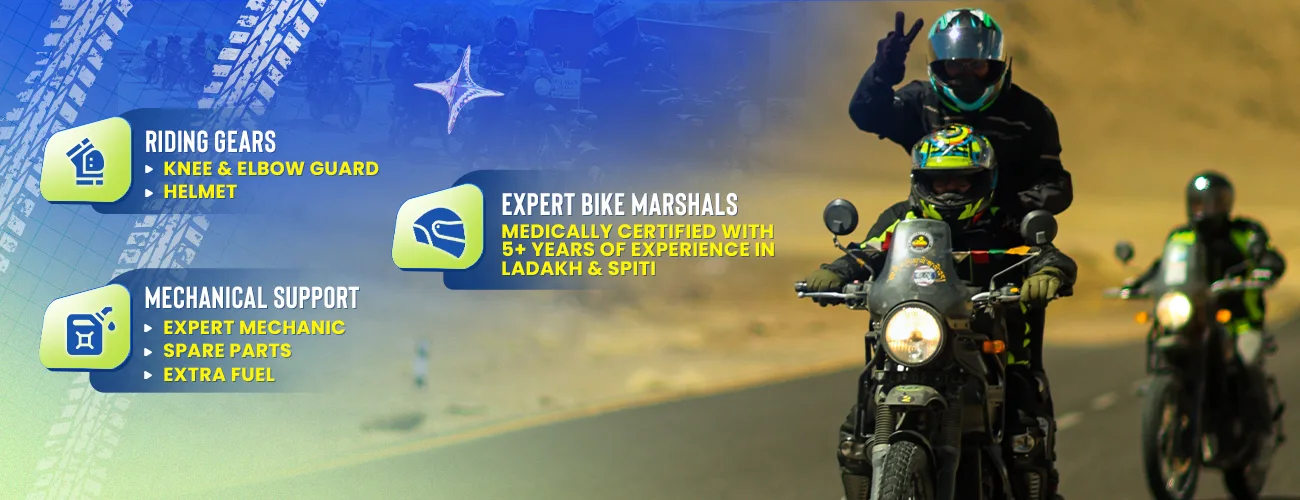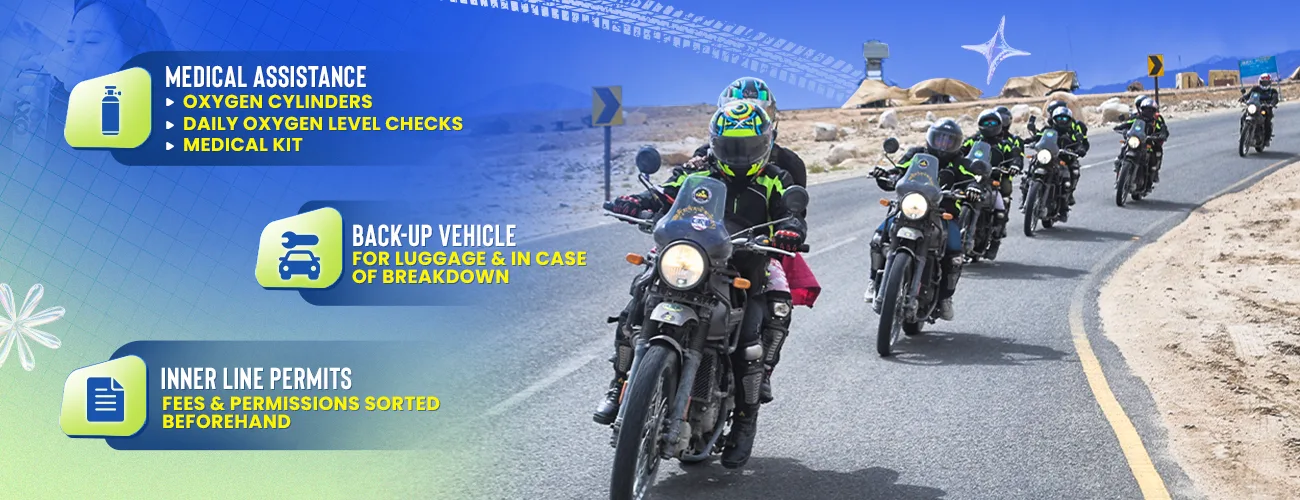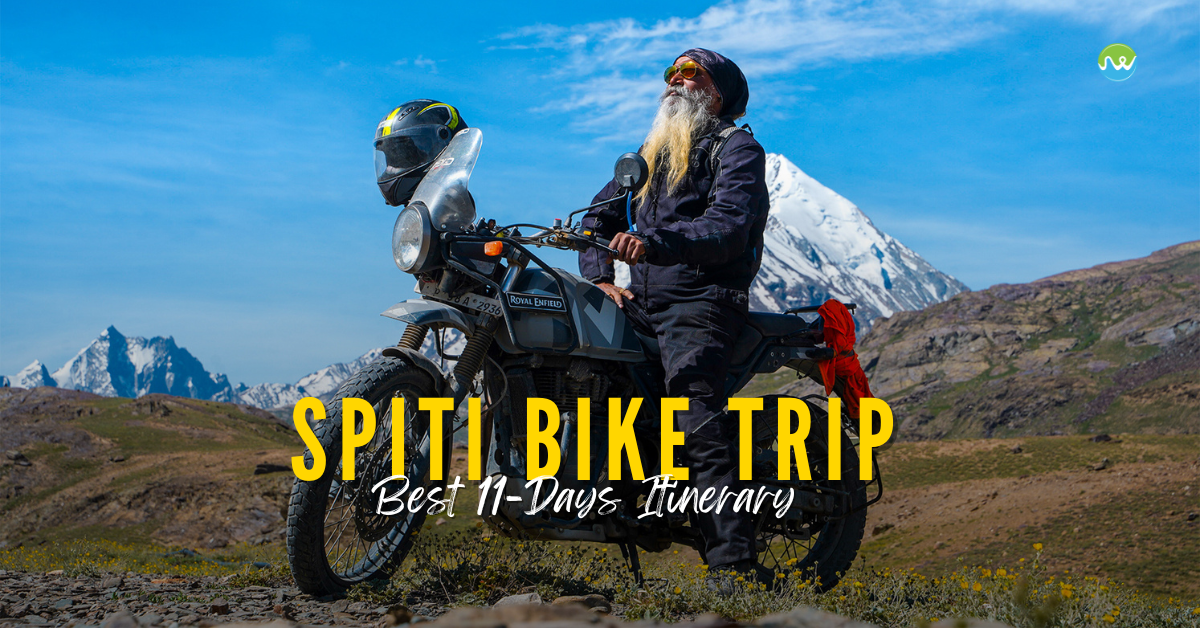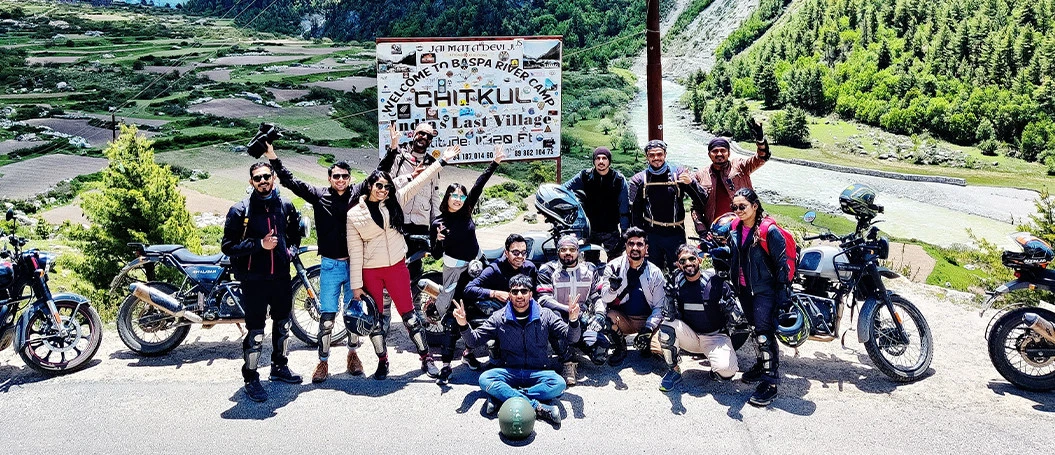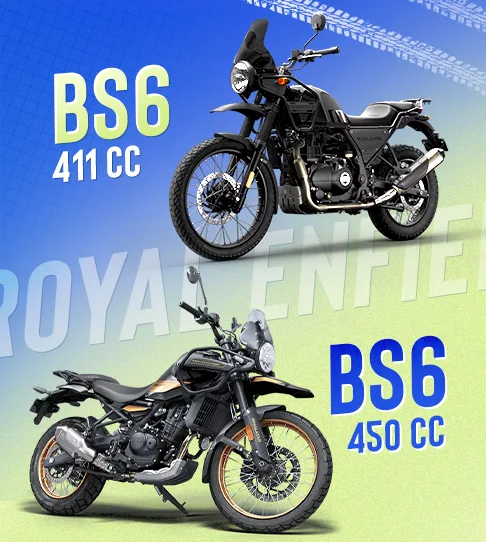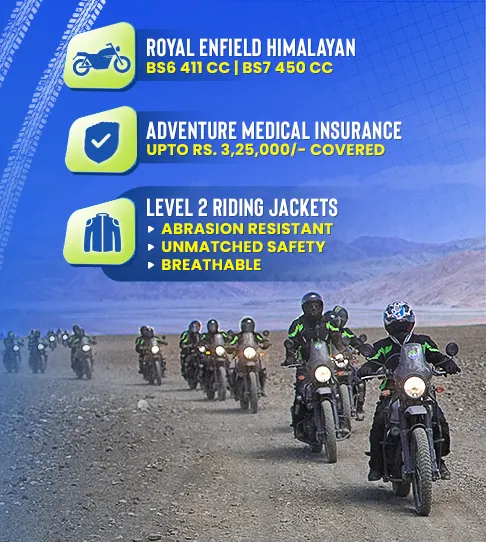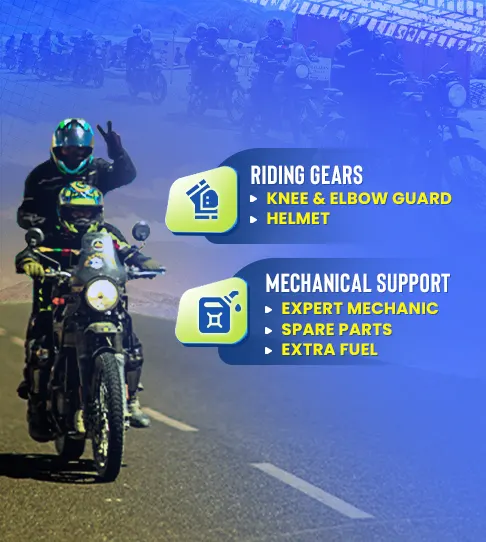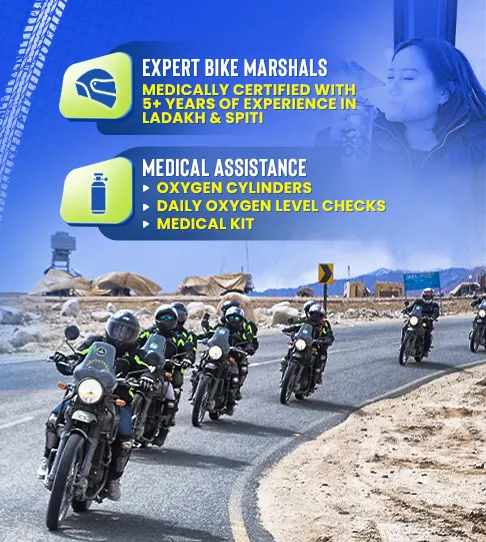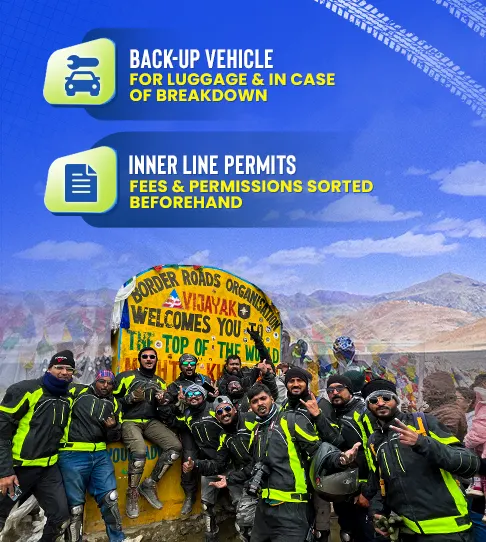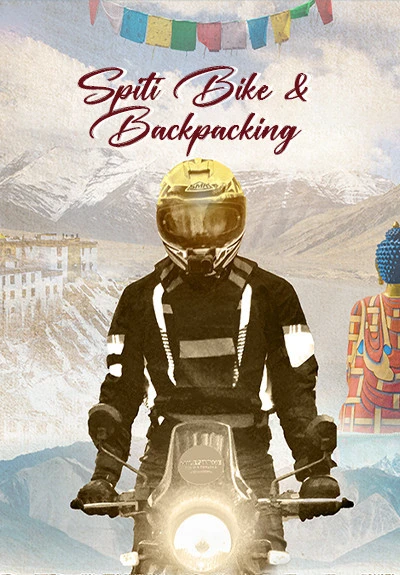
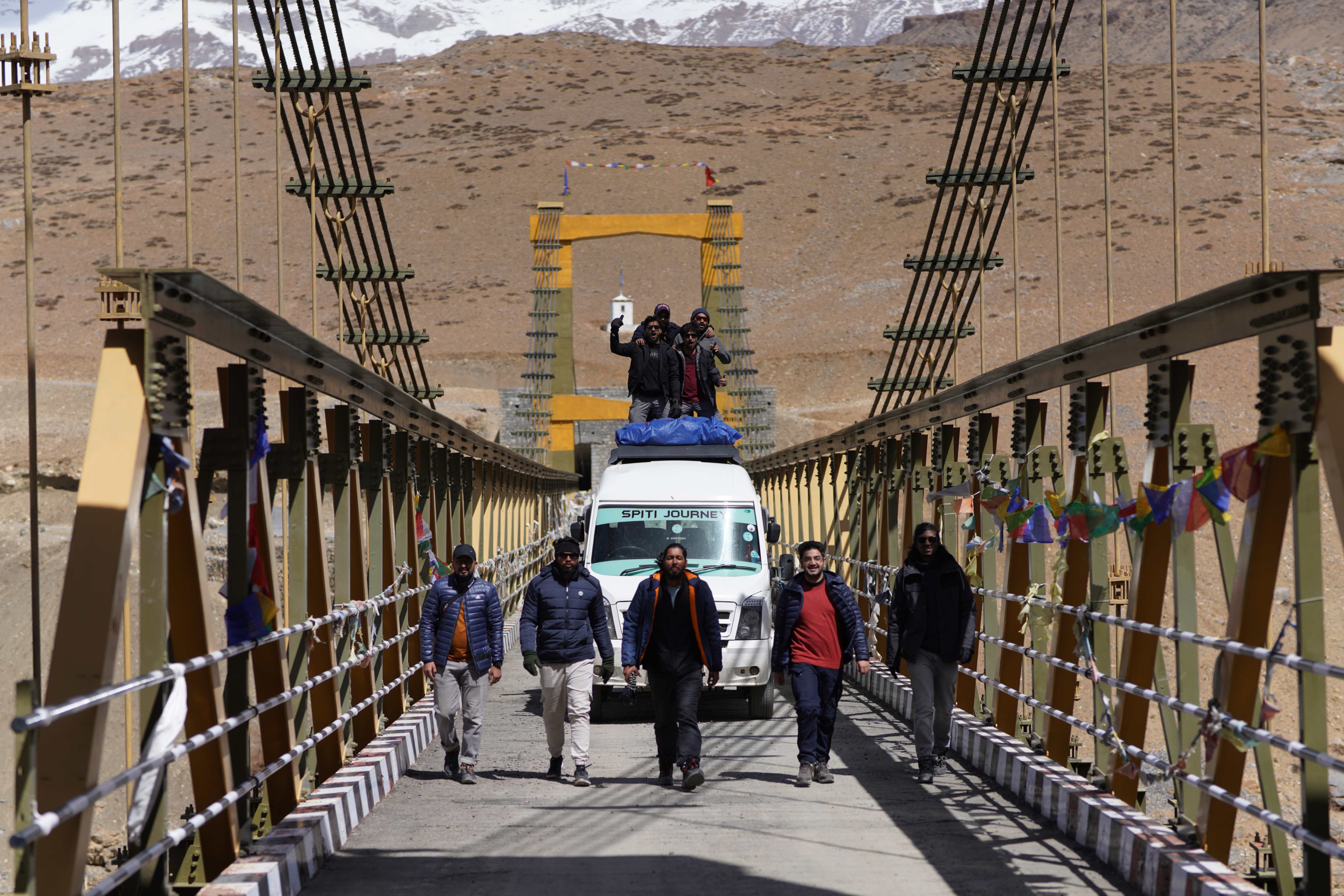
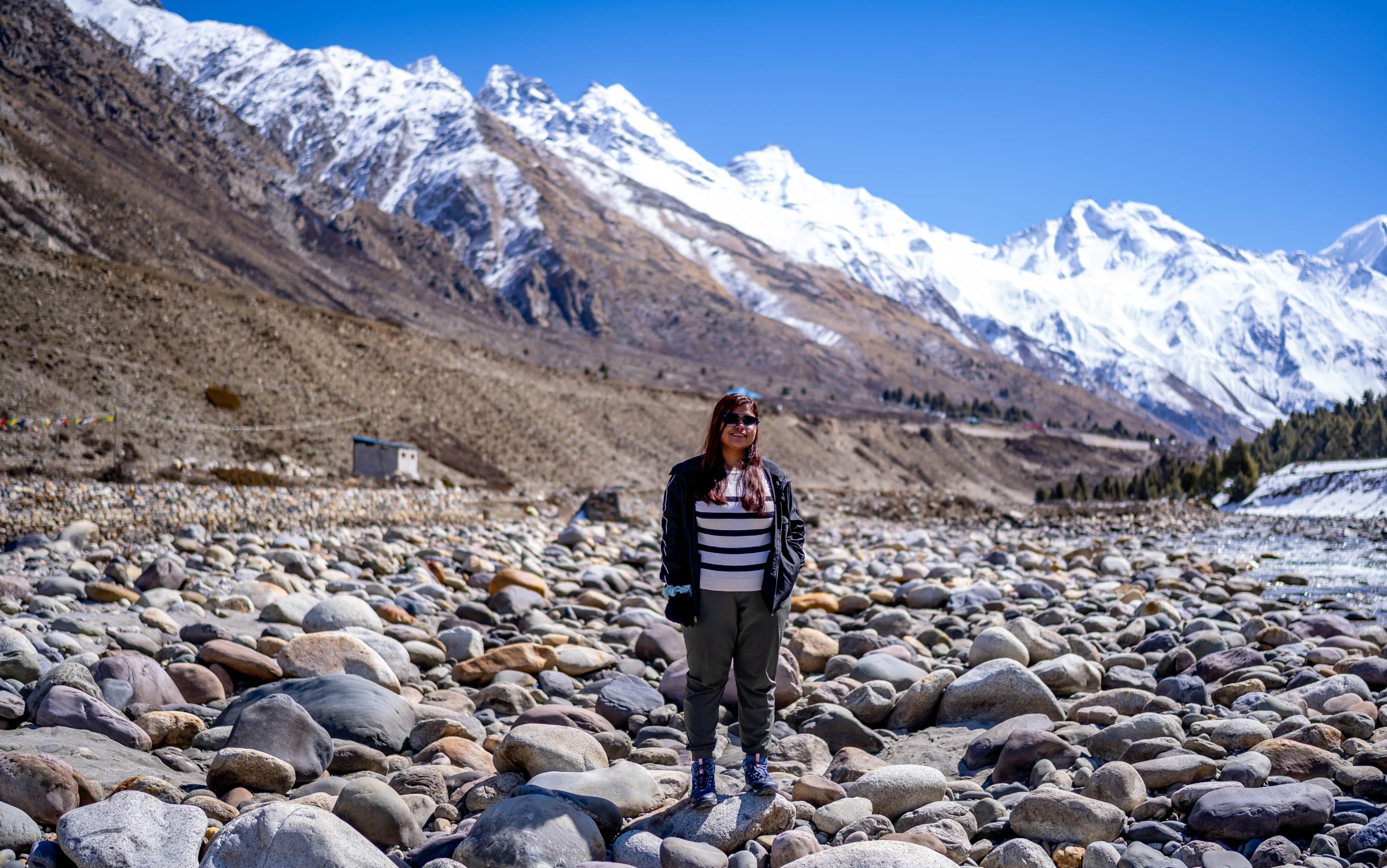
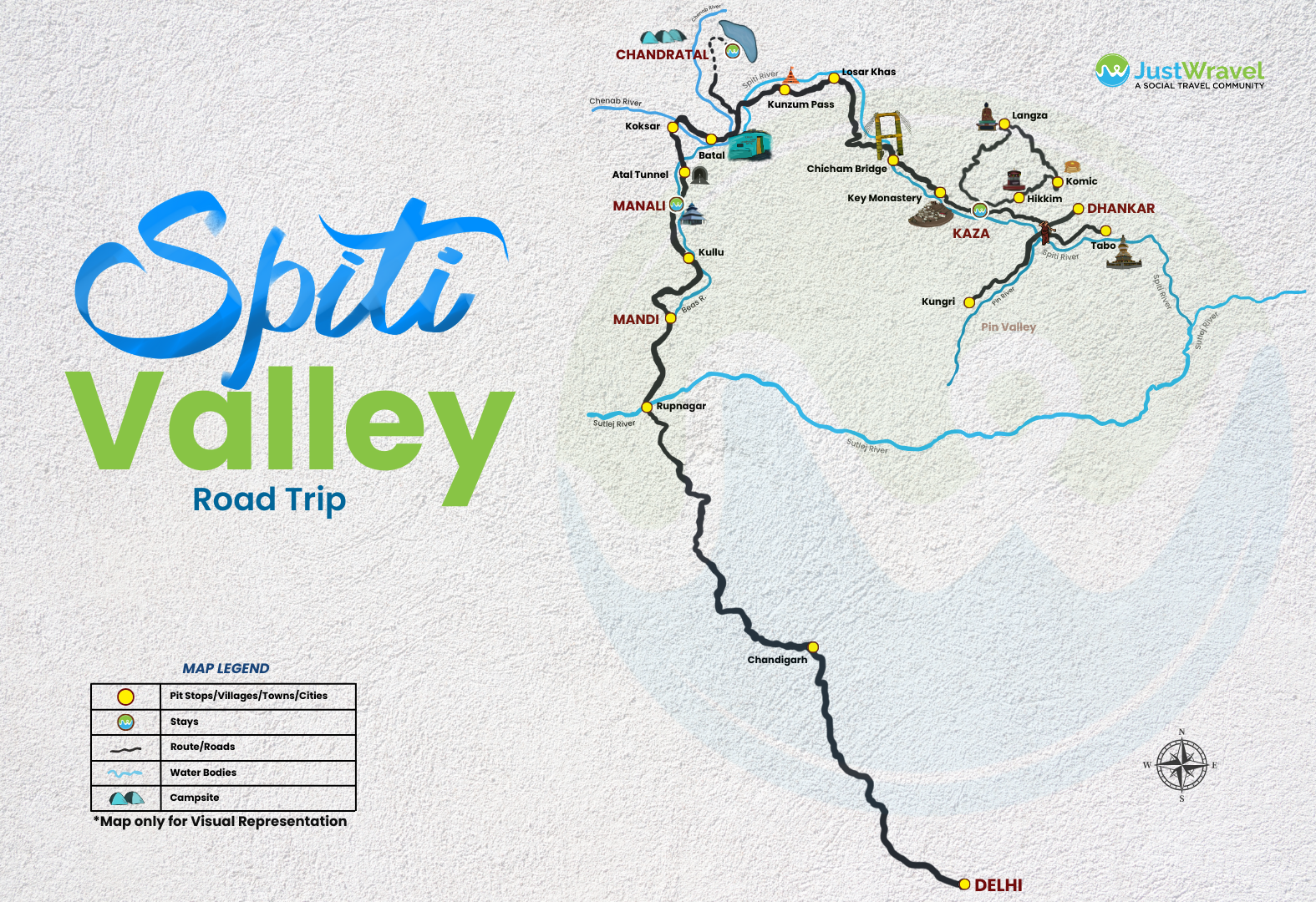
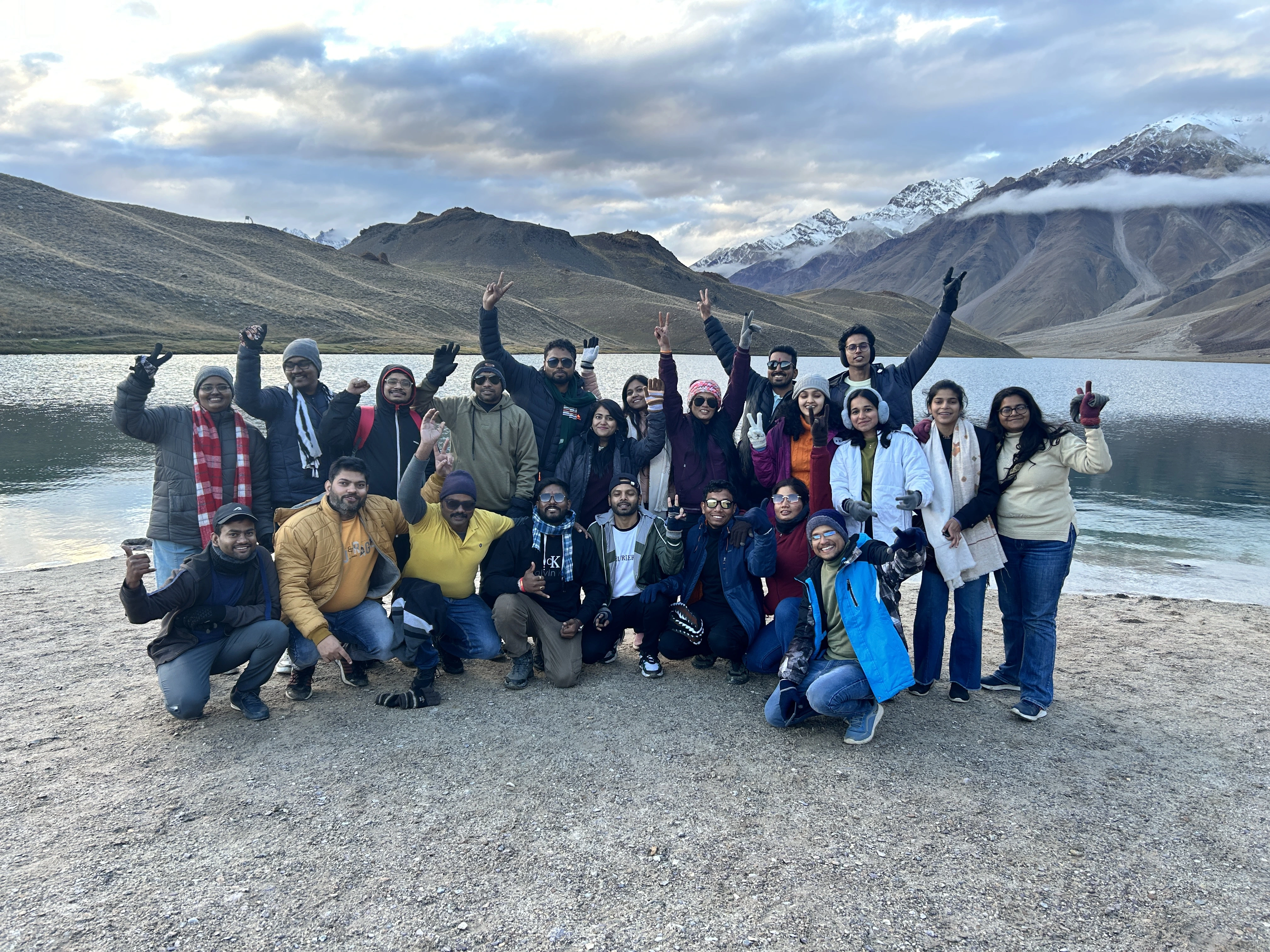
Road Trip to Spiti Valley
Details
Inclusions
Safe Travel
Flexible Cancellation
Easy EMI
Certified Captains
24/7 Support
Overview
A road trip to Spiti Valley is on every traveler's bucket list and the reason is that Spiti, with its desert mountains, snow-covered valleys, and lush green meadows remains one of the most beautiful destinations that our country has to offer. Nestled between India and Tibet, the word Spiti itself translates to “the middle land.” In recent times, the valley has gotten an abundance of tourists seeking the place for the serenity it provides as well as the adventure that the wicked terrains of Spiti provide you. In this Spiti valley road trip, we make sure that you get to make the most out of the experience and witness the mesmerizing Spiti Valley in all its glory as well as indulge in the thrill that the impassable roads of Spiti have to offer. Spiti Valley acts as a bridge between two distinct cultures and is the horizon on which people from these diverse cultures come together to build the foundation that Spiti itself stands upon. The valley is known for its century-old monasteries and the rich Buddhist influence that is still prevalent in every village today.
The people of Spiti believe in leading simple lives. It wasn’t until only five or six years ago that they even had electricity and since water is scarce in the cold desert that is Spiti, life can be tough. But the resilience with which people live their lives is not only commendable but also inspiring. Spending even a few days amidst the locals, interacting with them, and witnessing Spiti through their eyes is enough to make you fall in love with the land of Lamas.
This road trip to Spiti valley allows you to witness the wonder of nature and marvel at the blending landscapes of lofty mountains, green meadows, and barren roads that are perfect for off-roading, all existing in one place. It is also the perfect kind of long drive where scenic views rush you by in the backdrop as you embark on a journey of a lifetime. The best part is that since this Spiti valley road trip starts from Delhi, with Manali at its first halt, there’s a chance for you to indulge in local sightseeing at Manali and spend the rest of the day at leisure. After a brief tour session conducted by our trip leader, we will officially start our journey by heading towards Kaza which is known for its ancient monasteries and vibrant cultural festivals.
The Spiti river flows relentlessly through the northwest regions of this beautiful town, providing a serene backdrop that never fails to mesmerize the onlookers. Apart from its natural beauty, Kaza also holds extreme significance as it is the connecting link between Spiti and Lahaul and remains one of the oldest towns in the entire country. Other than the majestic mountains and impassable roads that provide thrill-seekers the opportunity for offroading, Spiti Valley is famous for holding some of the most quaint villages in its embrace. Mudh, Komic, and Langza are one of the few villages where you will get to experience life at a small pace. Without a visit to these villages and interacting with the locals, you’ll never get to experience Spiti Valley to its fullest.
Buddhism has its roots running all across the valley and influences the lives of the people here so it's only natural that you get to see some of the best monasteries in the country. The first monastery that we will visit is Kungri monastery. Built in the 14th century, it is the only monastery that follows the Nyingmapa order of Buddhism, which is the oldest order of Tibetan Buddhism. It represents the prevalence of Tibetan culture and its richness that has been present in the Pin valley for centuries now. After paying our reverence at the monastery, we will visit Mudh, a village nestled at the banks of the Ping river with Parbati ranges overlooking the tiny hamlet. It is also the gateway to Pin valley national park. Pin valley itself is a cold desert region surrounded by alpine forests. Founded in 996 C.E., Tabo monastery is the oldest operating domain with the walls still covered in murals and thangka paintings depicting tales from the Buddhist pantheon. Apart from that, there are manuscripts, statues, and other wooden structures of historical as well as the spiritual significance that has made the monastery a national historic treasure of India. Initially built as a fort monastery, Dhankar monastery now sits atop a spurring rock, overlooking the confluence of the Spiti river and Pin river just between the town of Kaza and Tabo. The jagged yet charming landscape, a statue of Buddha, and various thangka paintings are just a few things that add to the charm of the Dhankar monastery.
Kaza is the gateway to Hikkim which houses the highest Post Office in the world, and if you are someone who loves all things old school, then you can send a letter to a dear one from here. Many tourists love taking a trip down nostalgia lane with Hikkim as it allows you to experience the simple intimacy of writing words instead of simply typing them.
Another village that we will visit while on this road trip to Spiti valley is Komic which is the highest village in the world at an altitude of 15,500ft connected by a motorable road. Another village, Langza where you’ll find an abundance of fossils as well as the warm hospitality of the locals is where we make sure to pay a visit. Not just because of the quaint life of this tiny hamlet but to make you see the 1000-year-old Buddha statue that overlooks the village as a watchful protector and to ward off all kinds of evil. Key monastery or as the locals call it Kye Gompa is the largest as well as the oldest monastery in Spiti valley. It is also the training center for Lamas who will grow up to serve and preserve the culture of Spiti. Ancient relics, murals, and even images of Buddha are still preserved in the monastery and remain the main attraction for tourists. On our way to our next destination, we will make brief stops at a few places. One of them is Kibber, one of the highest inhabited villages in Spiti Valley elevated at an altitude of 14,200 ft. above sea level, and an abode to snow leopards and if you are lucky, you might get a chance to see one. And even if you don’t, the serene beauty of the village itself is enough to captivate you. The next attraction before we resume our actual journey is Asia’s highest bridge, Chicham which is elevated at a staggering height of more than 13,500ft and connects the village of Chicham with Kibber. Nestled in the Kunzum Range of the Himalayas, India’s highest motorable mountain road, Kunzum pass is our stop where you can see traces of Buddhist influence in the form of prayer flags all around the pass, fluttering along with the winds. The Chandratal lake, shaped like a crescent moon remains one of the most popular tourist destinations in Spiti valley. The crystal clear lake provides a peaceful backdrop for people to just sit and spend some moments completely at peace and is the perfect spot to conclude this Spiti valley road trip before we start our return journey. The best time to visit Spiti Valley, especially if you want to make sure to experience it in all its glory, is from February to April as the entire region is covered in a thick blanket of snow. If you love adventures, then this trip will allow you to take part in many. You can river raft in Spiti river or Pin valley, or take a safari on a Yak to explore the premise. In a nutshell, the Spiti valley road trip is a perfect combination of adventure and peace, an experience you simply cannot miss out on.
Gallery




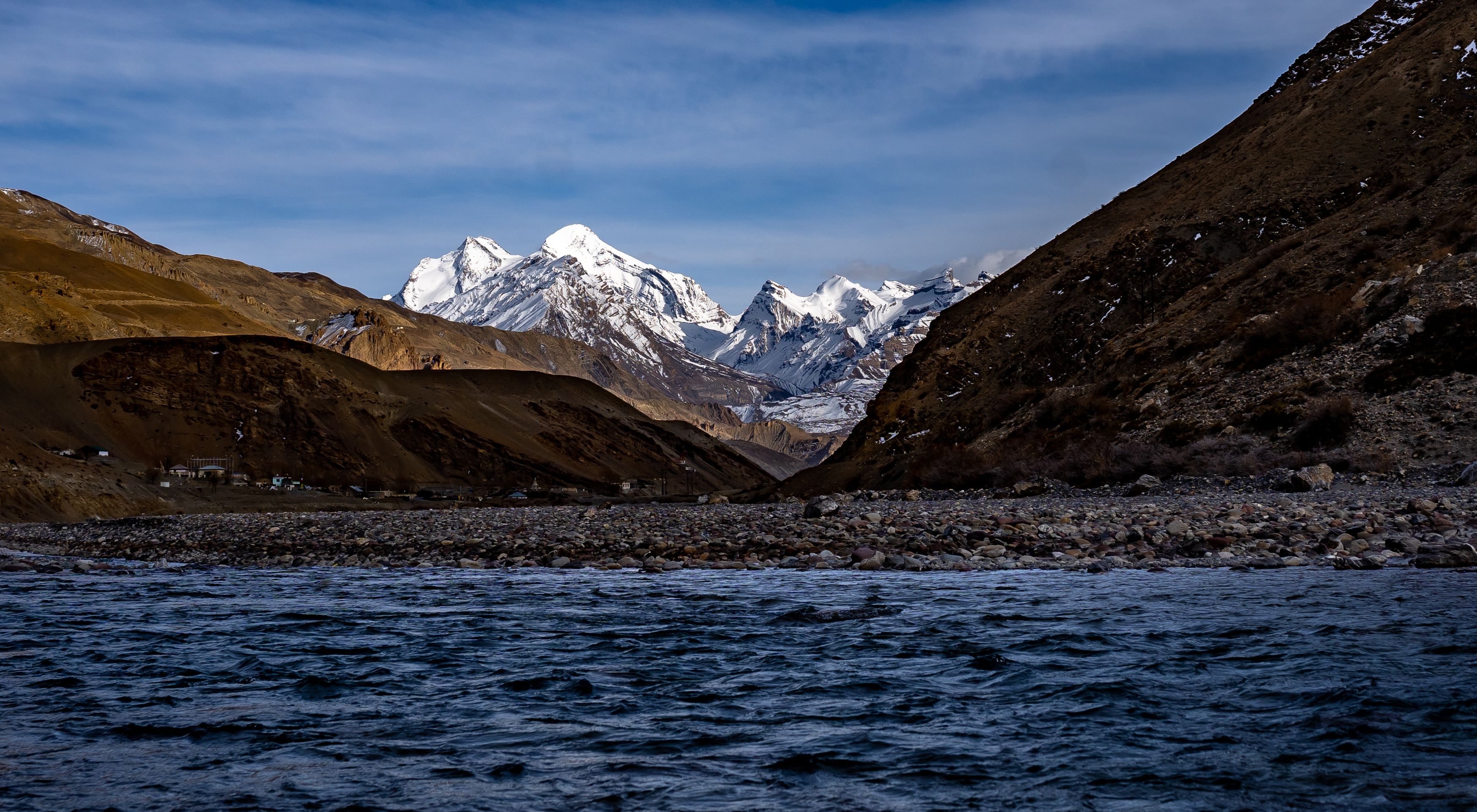
Itinerary
1
Day
Delhi to Manali | Overnight Journey
2
Day
Manali Arrival | Day at Leisure
3
Day
Manali to Kaza (200 Kilometers)
4
Day
Spiti Sightseeing Day 1 (Pin valley, Tabo, Dhankar)
5
Day
Spiti Sightseeing Day 2 (Hikkim, Komic, Langza, Key Monastery)
6
Day
Kaza to Chandratal via Chicham Bridge (90 Kilometers)
7
Day
Chandratal to Manali (125 Kilometers)
8
Day
Delhi Arrival | Tour Ends
Age Limit (Trip Wise)
Weekend
Getaways
18-38
Himalayan
Treks
18-48
Backpacking
Trips
18-40
Biking
Trips
18-45
Customized
Trips
No Limit
Inclusions & Exclusions
| Inclusions | Exclusions |
Transportation in Tempo Traveler from Manali to Manali. AC Volvo Bus from Delhi to Manali and return. Accommodations on sharing basis as per itinerary. Meal Plan: MAP Plan (Total 10 Meals - 1 Meal on Day 2 (D) + 2 Meals on Day 3 (B+D) + 2 Meals on Day 4 (B+D) + 2 Meals on Day 5 (B+D) + 2 Meals on Day 6 (B+D) + 1 Meal on Day 7 (B)) Evening Tea on Day 3, 4, 5 and 6. Freshen-up room for Day 7 (if time permits) The Trip Leader will be present at all times during the tour. Adventure Medical Insurance - The insurance provided will cover the journey from base to base. In this case, the insurance coverage applies specifically from Manali to Manali, excluding any travel before reaching or after departing. All permits Required First Aid Kits Oxygen Cylinders Oximeter | 5% GST Early check-in (Before 1:00 PM) & Late Check-out (After 11:00 AM) at the hotel. Any additional expenses of personal nature. Additional accommodation/food costs incurred due to any travel delay. Any lunch and other meals not mentioned in Package Inclusions. Any Airfare / Rail fare other than what is mentioned in “Inclusions” or any type of transportation. Parking and monument entry fees during sightseeing. Additional Costs due to Flight Cancellations, Landslides, Roadblocks, and other natural calamities. Any other services not specified above in inclusions. |
Cancellation Policy
| Upto 30 days | 29-21 days | 21-15 days | 14-0 days | |
| Batch Shifting | ||||
| Cancellation Charge | Free Cancellation | 25% of the Trip Amount | 50% of the Trip Amount | 100% of the Trip Amount |
| Booking Amount | Refunded in mode of Credit Note | Adjusted in Refund Deduction | Adjusted in Refund Deduction | No Refund |
| Remaining Amount | Full Refund (minus) booking amount | Refund (minus) 25% of the trip amount | Refund (minus) 50% of the trip amount | No Refund |
Payment Policy
| Upto 30 days | 29-21 days | 20-15 days | 14-7 days | |
|---|---|---|---|---|
| Booking Amount | ||||
| 50% Payment | Optional | Compulsory | ||
| 75% Payment | Optional | Optional | Compulsory | |
| 100% Payment | Optional | Optional | Optional | Compulsory |
Things To Pack
Rucksack:
You must pick a good quality backpack with a comfortable fit and straps that won’t give you shoulder pain. You can check out your nearest Decathlon store for a good trekking backpack.
You must pick a good quality backpack with a comfortable fit and straps that won’t give you shoulder pain. You can check out your nearest Decathlon store for a good trekking backpack.
Day Bag / Day Pack:
When you head towards the summit, you are required to carry only a few necessary items and for that, you need a day backpack as you will leave your bigger one on the campsite.
When you head towards the summit, you are required to carry only a few necessary items and for that, you need a day backpack as you will leave your bigger one on the campsite.
Hiking Shoes :
Durable footwear designed for rugged terrains.
Durable footwear designed for rugged terrains.
Floaters or Sandals:
Although the entire trek requires a good quality shoe, you still need to let your feet breathe to avoid chafing and blisters. When you are at the camp, a good pair of sandals and floaters will help you to move freely.
Although the entire trek requires a good quality shoe, you still need to let your feet breathe to avoid chafing and blisters. When you are at the camp, a good pair of sandals and floaters will help you to move freely.
Tees / Tshirts:
You must keep at least three pairs of quick dry tees so that you can wash them in between stops for proper hygiene.
You must keep at least three pairs of quick dry tees so that you can wash them in between stops for proper hygiene.
Poncho:
A poncho is an evolved form of a raincoat that provides coverage to your body as well as your bag and ensures total water protection from rain.
A poncho is an evolved form of a raincoat that provides coverage to your body as well as your bag and ensures total water protection from rain.
Quick Dry Towel:
A quick dry towel will help in maintaining proper hygiene. It must dry quickly because the wet fabric will only increase the chance of bacterial growth.
A quick dry towel will help in maintaining proper hygiene. It must dry quickly because the wet fabric will only increase the chance of bacterial growth.
Sanitizer:
Essential for maintaining cleanliness while trekking.
Essential for maintaining cleanliness while trekking.
Sun Cap / Hat:
A lightweight sun cap with side flaps is perfect to keep your head cool and avoid sunburns on a sunny day.
A lightweight sun cap with side flaps is perfect to keep your head cool and avoid sunburns on a sunny day.
Sunscreen SPF 40+:
To avoid sunburns and chafing, you need to put on sunscreen as well as cold cream.
To avoid sunburns and chafing, you need to put on sunscreen as well as cold cream.
Water Bottle (Re-usable):
Hydration is extremely important when it comes to trekking. Carrying a water bottle that you can refill with Himalayan water is a must.
Hydration is extremely important when it comes to trekking. Carrying a water bottle that you can refill with Himalayan water is a must.
Personal Toiletries:
A bag with all your essentials including napkins, toothpaste, sanitizers, paper soap, etc should be carried in a ziplock bag.
A bag with all your essentials including napkins, toothpaste, sanitizers, paper soap, etc should be carried in a ziplock bag.
Personal Medication / First Aid:
A few cuts and bruises are almost inevitable when you are on a trek so carrying a medical kit with bandages, Dettol, etc is necessary.
A few cuts and bruises are almost inevitable when you are on a trek so carrying a medical kit with bandages, Dettol, etc is necessary.
Sun Glasses / Reading Glasses:
Photochromatic glasses are specs that are designed to transform into anti-glare shades depending upon exposure to the sun. They are good when it comes to eye protection but one can also opt for clip-on glasses etc.
Photochromatic glasses are specs that are designed to transform into anti-glare shades depending upon exposure to the sun. They are good when it comes to eye protection but one can also opt for clip-on glasses etc.
Charger:
To keep your electronic devices powered during the trip.
To keep your electronic devices powered during the trip.
Power Bank:
Ensures your devices stay charged when there are no outlets.
Ensures your devices stay charged when there are no outlets.
Personal Documents & ID's:
Identification proofs like Aadhar Card, Drivers License.
Identification proofs like Aadhar Card, Drivers License.
Laundry Bag (Waterproof):
In case your clothes get wet or your garments don’t dry, you can carry them in polythene. However, make sure that all the plastic that you are carrying into the woods leaves with you. Don’t litter in the mountains.
In case your clothes get wet or your garments don’t dry, you can carry them in polythene. However, make sure that all the plastic that you are carrying into the woods leaves with you. Don’t litter in the mountains.
Track Pants:
A good pair of track pants made of polyester will let your skin breathe. They’re lightweight, dry easily, and comfortable to walk around in. You can easily avoid chafing and rashes by investing in a good pair of track pants.
A good pair of track pants made of polyester will let your skin breathe. They’re lightweight, dry easily, and comfortable to walk around in. You can easily avoid chafing and rashes by investing in a good pair of track pants.
Trekking Shoes:
A good trekking shoe is comfortable, provides ankle support, and has a good grip as well. They shouldn’t be chunky, instead, they should be lightweight and sturdy.
A good trekking shoe is comfortable, provides ankle support, and has a good grip as well. They shouldn’t be chunky, instead, they should be lightweight and sturdy.
Cotton Socks:
Cotton socks are extremely comfortable to move around in and are lightweight as well which is why you can always count on a good pair of cotton socks while trekking. However, keep in mind to change them and avoid wearing them when they are wet.
Cotton socks are extremely comfortable to move around in and are lightweight as well which is why you can always count on a good pair of cotton socks while trekking. However, keep in mind to change them and avoid wearing them when they are wet.
Woolen Socks:
A good pair of woolen socks, especially merino, are comfortable, limit odors and provide adequate insulation from the cold so you can wear them at night.
A good pair of woolen socks, especially merino, are comfortable, limit odors and provide adequate insulation from the cold so you can wear them at night.
Woolen Gloves:
Insulated gloves help in maintaining proper body heat in your hands and also provide a better grasp on trekking poles.
Insulated gloves help in maintaining proper body heat in your hands and also provide a better grasp on trekking poles.
Main Jacket:
It’s emphasized that you need to carry proper layers so you can avoid getting cold which is why you need to carry a heavy jacket that you can put on over your other clothes.
It’s emphasized that you need to carry proper layers so you can avoid getting cold which is why you need to carry a heavy jacket that you can put on over your other clothes.
Woolen Cap:
A woolen cap will help prevent cold when you ascend to high altitude. You can also cover your ears to avoid any pain and discomfort you might face in them when going at high altitudes.
A woolen cap will help prevent cold when you ascend to high altitude. You can also cover your ears to avoid any pain and discomfort you might face in them when going at high altitudes.
Hoodie:
A versatile layering option for various temperatures.
A versatile layering option for various temperatures.
Scarf / Balaclava:
Along with sun rays and chilly winds, you also get hit by dirt and grime during treks which is why it's important to carry a scarf or balaclava so you can cover your face when needed.
Along with sun rays and chilly winds, you also get hit by dirt and grime during treks which is why it's important to carry a scarf or balaclava so you can cover your face when needed.
Head Lamp:
You can’t rely on moonlight when you are in the mountains. A torch or even a headlamp with a fresh pair of batteries is always a good idea to bring along.
You can’t rely on moonlight when you are in the mountains. A torch or even a headlamp with a fresh pair of batteries is always a good idea to bring along.
Trekking Pole:
The trekking pole assists in more than one way. It saves energy while also providing stability and helps you to maintain proper balance.
The trekking pole assists in more than one way. It saves energy while also providing stability and helps you to maintain proper balance.
Camera:
This should be obvious. To make sure that you get to capture all the great moments from your trek. Make sure that you have enough storage and some extra batteries as well.
This should be obvious. To make sure that you get to capture all the great moments from your trek. Make sure that you have enough storage and some extra batteries as well.
Riding Gear:
If your trip involves biking or motorcycling.
If your trip involves biking or motorcycling.
Moisturiser & Cold Cream:
To avoid sunburns and chafing, you need to put on sunscreen as well as cold cream.
To avoid sunburns and chafing, you need to put on sunscreen as well as cold cream.
Lip Balm:
Your lips can become chapped due to the harsh cold winds so it's important to keep them moisturized.
Your lips can become chapped due to the harsh cold winds so it's important to keep them moisturized.
Sanitary Pads:
Essential for feminine hygiene.
Essential for feminine hygiene.
Insect Repellent:
Guards against pesky bugs and insects.
Guards against pesky bugs and insects.
Cash:
Emergency funds for unexpected situations.
Emergency funds for unexpected situations.
Thermals:
Thermal is a piece of garment that helps in keeping your body warm in cold temperatures. It is a necessary item that you need when going on a high-altitude trek.
Thermal is a piece of garment that helps in keeping your body warm in cold temperatures. It is a necessary item that you need when going on a high-altitude trek.
Snacks / Dryfruits / Energy Bar:
Provides quick energy on the go.
Provides quick energy on the go.
Positive Attitude:
The most important item for a successful trek or trip, keeping your spirits high and adaptable to the challenges of the journey.
The most important item for a successful trek or trip, keeping your spirits high and adaptable to the challenges of the journey.
FAQs
Is Spiti Valley Open in December?
The Spiti Valley is open all around the year but it is recommended that you do not visit the region if you're just a tourist. The reason is that Spiti receives heavy snowfall and the area becomes highly dangerous for enthusiasts or travelers, expert guidance is required otherwise conditions can become fatal too.
Can We Visit Spiti Valley in January?
Yes! We can visit Spiti Valley in January but it is recommended only for expeditions and not tourists as you might need an expert's guidance there.
How to Reach Lahaul Spiti From Chandigarh?
The distance between Chandigarh to Lahaul Spiti is about 450+ Kilometers and one can take a bus from Chandigarh for the same route. The time it takes for an individual to reach Spiti from Chandigarh is around 12-13 hours. The Chandigarh to Spiti valley route is shorter than the distance we need to cover when going to Spiti valley from Delhi.
Can We Visit Chitkul in December?
No! We cannot visit Chitkul during December. Due to heavy snowfall, the roads get blocked and we can't move further ahead than Sangla Valley. The water also freezes up and keeping yourself hydrated becomes a challenge.
When is Spiti Valley Open?
Routes to Spiti Valley are open all around the year, but there is a little distinction. While the Shimla route is open all around the year, the Manali route closes for a brief time due to the closing of Kunzum Pass. Moreover, the Manali route is open from June to October.
How's the Weather Condition of Spiti in March?
The conditions are good enough for travelers to be able to experience Spiti in all its glory and the winter Spiti tour is conducted starting from March only.
What Is the Best Time to Visit Spiti Valley?
The best time to visit Spiti Valley is divided into two parts, the winter season and the summer season. If you want to experience Winter Spiti then you need to visit Spiti from March to May. Otherwise, one can visit from May to October and get to experience a different side of Spiti.
What Necessary Items Should I Pack For The Spiti Valley Road trip?
Once your booking is confirmed, an email confirmation will be sent to you which will include all the necessary information including an extensive packing list.
What Is the Distance Between Kaza and Spiti?
Kaza is an administrative town. So, in terms of distance, there's no proper way to measure it. But once you enter Spiti Valley, you'll soon find Kaza there after a short distance of 4-5 kilometers.
How to Travel from Delhi to Spiti by Flight?
The distance between Delhi and Lahaul Spiti is 712 Kilometers. There are no airports on the route that you take while traveling to Spiti. You're recommended to take flights from wherever you are coming to Delhi only. After that, you need to move by road. If you think that the distance between Delhi to Spiti valley is way too much for you in terms of a road trip then you can land in Chandigarh which is a little closer to Spiti Valley and will shorten your road trip by a couple of hours. Then for your return journey to Delhi, you need to travel by road only.
What is the actual distance between Lahaul-Spiti and Delhi by road?
If you're going by road and choosing the Shimla route from Delhi then it would take approximately 18 hours of driving for you to reach there if you don’t make many pit stops but that’s entirely up to you. Now, if you're taking the Manali route then at least 24 hours in the car, driving is required and you need to make a pit stop after reaching Manali or you'll be very much exhausted otherwise. The total distance between Lahaul Spiti and Delhi is 708 Kilometers if we go by the shortest route.
Can We Travel From Kasol to Spiti Valley?
The usual route that we follow to move from Kasol to Spiti Valley is through Manali. First, we take a bus from Bhuntar to Manali which is a two-hour drive. Then, we board an overnight bus from Manali to Spiti Valley.
How to Reach Key Monastery From Delhi?
First, you’ll have to reach the administrative town of Spiti, which is Kaza. From there, you can rent a bike or Taxi to move towards Key Monastery. Otherwise, if you've booked the winter Spiti valley road trip with us, then you don’t need to fret. Since Key Monastery is one of the most prominent spots in Spiti, we make sure that we cover it in the itinerary.
When is the Manali route to Spiti Valley open?
The Manali route to Spiti Valley is open at all times but during the winter seasons, due to heavy snowfall, the roads become slippery and hostile which is why it’s not recommended for a common tourist to embark on a Spiti valley road trip in winter all on their own.
How to Reach Spiti Valley From Manali?
There are two ways to reach Spiti. One is via Manali while the other is via Shimla. On this road trip to Spiti valley from Manali, we traverse the Manali route. It takes about 12-13 hours to reach Spiti from Manali in this Spiti valley road trip. It is considered to be one of the best routes to reach Spiti Valley especially when it comes to road trips as the duration of this trip via the Manali route is shorter in comparison. Not to mention that the roads are wider and better. The route that one needs to follow is first, go to Kaza from Manali and then change buses for Spiti from Kaza.
Everything you need to know about Spiti
A piece of poetry, a piece of heaven,
A piece of serenity and solitude;
That is the Spiti Valley…
A road trip to Spiti Valley, whether it’s summer or winter, is a dream of every traveler. And why is that a dream? It proudly showcases some of the most isolated vistas on the planet, as well as some of the highest settlements in the world.
As you step into Spiti Valley, you are greeted by long, winding roads and valleys that offer breathtaking views of the cold desert and snow-capped mountains. Surrounded by the mighty Himalayas, Spiti Valley in Himachal Pradesh sits at an altitude of 12,500 feet above sea level, receiving only about 250 days of sunshine annually, making it one of the chilliest places in the nation.
The name "Spiti" translates to 'The Middle Land', signifying its location between India and Tibet. This region is adorned with numerous ancient monasteries, including the magnificent Key Monastery, which is over a millennium old and stands as the largest monastery in Spiti Valley.
Spiti, with its sparse population, is a haven for adventure enthusiasts, offering a plethora of trekking routes and mountain passes to explore. Kunzum La provides a mesmerizing 360-degree vista of the Bara-Shigri Glacier, the world's second-longest glacier. Another enchanting destination is Chandratal Lake, where the water transforms from reddish hues to shades of orange, blue, and emerald green as dusk approaches. Due to heavy snowfall isolating Spiti from the rest of the country for approximately six months each year, the summer season remains the sole period when Spiti is directly accessible by road.
Spiti Valley stands as a focal point for both academic research and spiritual exploration for followers of Buddhism, attracting travelers with its distinctive offerings. One of its standout features is the Key Monastery, recognized as one of the oldest monasteries in the world and a personal favorite of the Dalai Lama. Whether your interests lie in spirituality, history, or the cinematic charm of Spiti, these packages can ensure that your trip is both pleasurable and enriching.
Spiti will make you understand the value of little things in life, the moments when we become ourselves, the moments that we will chase and find the inner child we lost, a valley that will heal you for things that no one ever asked sorry for.
And in every letter, it is true… SPITI VALLEY IS A WORLD WITHIN A WORLD
A world of simplicity and a world of togetherness…
Here is everything you need to know about Spiti Valley….
How to Reach Spiti Valley
To reach Spiti Valley in summer and winter, you have two main routes to consider. In summer, you can access Spiti Valley from both Manali and Shimla. However, during winter, due to heavy snowfall, the Rohtang pass is closed, making the Shimla route the only option to reach Spiti Valley. The Shimla route is preferred in winter as it allows for a gradual gain in altitude, reducing the risk of altitude sickness.
Summer Spiti Valley: During the summer months, Spiti Valley offers a mesmerizing experience with its lush green landscapes and pleasant weather. Travelers can access Spiti Valley from both Manali and Shimla, with the Manali route being a popular choice. This route provides stunning views and passes through attractions like Kullu Valley, making the journey a scenic delight for adventurers seeking a summer escape.
Winter Spiti Valley: In contrast, winter in Spiti Valley transforms the region into a snowy wonderland, offering a unique and challenging adventure. The winter route to Spiti Valley from Shimla via Kinnaur is preferred due to the closure of the Manali route during winter. This itinerary spans over 9-10 days, allowing travelers to explore destinations like Tabo, Kaza, and Nako, providing a glimpse into the raw beauty of Spiti Valley amidst the winter snowscapes.
Best Time to Visit Spiti Valley
The best time to visit Spiti Valley depends on what you want to experience from Spiti Valley. Spiti Valley is a color-changing canvas that will give you different experiences in each season. For most tourists, the ideal time is from March to June when the weather is pleasant, ranging from 14°C to 20°C, making it perfect for outdoor activities like trekking and sightseeing. This period also marks the opening of the Manali route in May, attracting bikers and tourists to the valley.. On the other hand, if you seek adventure and are prepared for extreme cold, winter from October to February offers a unique experience with the valley covered in snow, although temperatures can drop as low as -20°C.
Summer Spiti Valley: The Spiti Valley in summer, from June to late September, transforms into a scenic paradise with unending meadows, sparkling blue streams, and clear skies. The valley comes alive with a green tapestry, pleasant temperatures ranging from 15 – 20ºC, and blooming flowers everywhere. This period is ideal for exploring the entire valley as the snow has melted, making it accessible for various activities like trekking and sightseeing. A bike trip to Spiti Valley during summer is a dream for many, offering a thrilling experience on the well-paved Shimla-Spiti route amidst the rugged terrains and barren landscapes.
Winter Spiti Valley: Spiti Valley in winter, from late October to early March, transforms into a mesmerizing white haven draped in snow. The valley's landscape changes dramatically, offering a stark difference from the summer months. With temperatures hovering around 8 degrees during the day and dropping as low as -30 degrees, winter in Spiti Valley is a sight to behold. While accessibility may be challenging due to heavy snowfall, this season attracts adventure enthusiasts looking for 4x4 expeditions and rustic landscapes covered in snow. Traveling to Spiti Valley in winter requires careful planning and preparation due to extreme temperatures and limited facilities, making it a daring and thrilling experience for those seeking an adventurous journey amidst the winter wonderland of Spiti.
Still trying to decide the best season? READ MORE HERE - https://www.justwravel.com/blog/best-time-to-visit-spiti-valley-winter-vs-summer
Best Places to Visit in Spiti Valley
Kaza: A stunning town located at 12,500 feet, offering majestic snow-covered mountains, bustling markets, and a vibrant local culture. Explore the old and new sections of Kaza for a complete Spiti experience.
Langza: Known for its Buddha statue and abundant fossils, Langza is a picturesque village where you can witness the local way of life amidst freezing temperatures and unique craftsmanship.
Kunzum Pass: An iconic pass at 15,060 feet, providing breathtaking views of the Chandra Bhaga ranges and access to Chandratal Lake. Visit the nearby village of Losar for lodging and dining options.
Key Monastery: Established in the 11th century, this grand monastery houses ancient Buddha statues and a vast collection of books. It serves as a religious training hub for approximately 300 lamas, showcasing impressive architecture and history.
Kibber: A village where you can spot snow leopards during winter, offering a unique wildlife experience. Visit the Kee Monastery nearby, known for its grandeur and historical significance.
Komic: Situated at a breathtaking altitude, Komic is renowned for its snow-capped mountains, remote location, and iconic monastery. Visitors can immerse themselves in the tranquility of this village while marveling at its natural beauty and cultural richness
Chicham Bridge: A must-visit attraction in Spiti Valley, Chicham Bridge stands as the highest bridge in Asia, offering stunning views and a thrilling experience. This architectural marvel replaced a manual ropeway used by villagers, adding a touch of adventure to the journey
Pin Valley: Home to the Pin Valley National Park, this picturesque valley boasts rare flora and fauna, including the elusive snow leopard. Visitors can explore the lush greenery, serene landscapes, and unique wildlife sanctuary, making it a must-visit destination for nature enthusiasts
Hikkim: Home to the world's highest post office, allowing visitors to send postcards from this remote location. Explore the village's serene surroundings and experience the charm of this high-altitude settlement.
Chandratal Lake: A beautiful lake surrounded by snow-capped peaks, offering a tranquil setting for nature lovers and photographers. Enjoy the serene ambiance and pristine beauty of this high-altitude lake.
Nako: Nako village is a serene destination in Spiti Valley, known for its beautiful lake surrounded by four Tibetan temples. Visitors can explore the nearby caves believed to be meditation sites of saints, offering a tranquil and spiritual experience.
Dhankar Monastery: Situated at a height of 12,800 feet above sea level, Dhankar Monastery is one of the most famous monasteries in India. Founded 1000 years ago, this monastery holds significant historical and cultural importance, attracting tourists from around the world to witness its ancient architecture and spiritual ambiance.
Don’t miss anything from Spiti for that, READ 20 BEST PLACES TO VISIT IN SPITI VALLEY - https://www.justwravel.com/blog/best-places-to-visit-in-spiti-valley
Things to Do in Spiti Valley
- Bike Ride through Kunzum Pass: Experience the thrill of crossing one of the highest motorable passes in India, Kunzum Pass, at an altitude of 4551 meters above sea level. This adventurous bike ride connects Spiti Valley to Kullu, offering panoramic views of the Bara-Shigri Glacier, the world's second-longest glacier.
- Trek to Chandratal Lake: A trek to the crystal crescent-shaped Chandratal Lake, surrounded by snow-capped peaks and offers a serene and picturesque setting for nature lovers and adventure enthusiasts in Spiti Valley.
- Shopping in Nako Village: Explore the small shops in Nako Village to buy unique gifts for friends and family, offering a glimpse into the local culture and a chance to take home memorable souvenirs.
- Letter Posting from Hikkim: Experience the thrill of sending mail from one of the world's highest post offices in Hikkim, a unique activity that allows visitors to connect with loved ones from this remote and picturesque location in Spiti Valley.
- Medication in Monastery: Visit the monasteries in Spiti Valley to explore traditional medication practices, where monks may offer insights into ancient healing methods and the use of natural remedies for various ailments.
- Stargazing in Spiti from Nako: Enjoy a mesmerizing stargazing experience in Spiti Valley from Nako, a tranquil village offering clear skies and stunning views of the night sky, providing a peaceful and awe-inspiring activity for visitors.
- Traditional Food Exploration: Delve into the culinary delights of Spiti Valley by exploring traditional food options, such as local dishes and delicacies, to savor the authentic flavors of the region and immerse yourself in the rich gastronomic culture of Spiti.
Monasteries of Spiti
Key Monastery: Situated at a height of 4,166 meters above sea level, the Key Monastery is the largest monastery in Lahaul and Spiti. It serves as a religious training center for lamas and is believed to have been founded in the 11th century by Dromtön, a student of the renowned teacher Atisha.
Tabo Monastery: Known as the Ajanta of the Himalayas, the Tabo Monastery is one of the oldest monasteries in India and the Himalayas. It has been functioning continuously since its inception and is famous for its exquisite murals and stucco sculptures.
Dhankar Monastery: Perched on the edge of a cliff at an altitude of 12,774 feet, the Dhankar Monastery offers a panoramic view of the Spiti Valley. It is a significant monastic complex in Lahaul and Spiti, showcasing the rich cultural heritage of the region.
Kungri Monastery: Located in the Pin Valley, the Kungri Monastery is the second oldest monastery in Spiti and follows the Nyingmapa Buddhism. It is a center of Buddhist culture and principles, attracting pilgrims, tourists, and scholars alike.
Tayul Monastery: Situated in the Bhaga Valley of Spiti, the Tayul Monastery houses a 12-foot-tall statue of Padmasambhava. This monastery is known for its religious significance and the presence of a hundred million mani wheels, symbolizing compassion.
VIDEOS
Memories for Life
posts
Instagram Images
REVIEWS
What our Clients Say About Us
blogs
Our Blogs
TRIPS
Related Trips





Road Trip to Spiti Valley
Details
Inclusions
Safe Travel
Flexible Cancellation
Easy EMI
Certified Captains
24/7 Support
Overview
A road trip to Spiti Valley is on every traveler's bucket list and the reason is that Spiti, with its desert mountains, snow-covered valleys, and lush green meadows remains one of the most beautiful destinations that our country has to offer. Nestled between India and Tibet, the word Spiti itself translates to “the middle land.” In recent times, the valley has gotten an abundance of tourists seeking the place for the serenity it provides as well as the adventure that the wicked terrains of Spiti provide you. In this Spiti valley road trip, we make sure that you get to make the most out of the experience and witness the mesmerizing Spiti Valley in all its glory as well as indulge in the thrill that the impassable roads of Spiti have to offer. Spiti Valley acts as a bridge between two distinct cultures and is the horizon on which people from these diverse cultures come together to build the foundation that Spiti itself stands upon. The valley is known for its century-old monasteries and the rich Buddhist influence that is still prevalent in every village today.
The people of Spiti believe in leading simple lives. It wasn’t until only five or six years ago that they even had electricity and since water is scarce in the cold desert that is Spiti, life can be tough. But the resilience with which people live their lives is not only commendable but also inspiring. Spending even a few days amidst the locals, interacting with them, and witnessing Spiti through their eyes is enough to make you fall in love with the land of Lamas.
This road trip to Spiti valley allows you to witness the wonder of nature and marvel at the blending landscapes of lofty mountains, green meadows, and barren roads that are perfect for off-roading, all existing in one place. It is also the perfect kind of long drive where scenic views rush you by in the backdrop as you embark on a journey of a lifetime. The best part is that since this Spiti valley road trip starts from Delhi, with Manali at its first halt, there’s a chance for you to indulge in local sightseeing at Manali and spend the rest of the day at leisure. After a brief tour session conducted by our trip leader, we will officially start our journey by heading towards Kaza which is known for its ancient monasteries and vibrant cultural festivals.
The Spiti river flows relentlessly through the northwest regions of this beautiful town, providing a serene backdrop that never fails to mesmerize the onlookers. Apart from its natural beauty, Kaza also holds extreme significance as it is the connecting link between Spiti and Lahaul and remains one of the oldest towns in the entire country. Other than the majestic mountains and impassable roads that provide thrill-seekers the opportunity for offroading, Spiti Valley is famous for holding some of the most quaint villages in its embrace. Mudh, Komic, and Langza are one of the few villages where you will get to experience life at a small pace. Without a visit to these villages and interacting with the locals, you’ll never get to experience Spiti Valley to its fullest.
Buddhism has its roots running all across the valley and influences the lives of the people here so it's only natural that you get to see some of the best monasteries in the country. The first monastery that we will visit is Kungri monastery. Built in the 14th century, it is the only monastery that follows the Nyingmapa order of Buddhism, which is the oldest order of Tibetan Buddhism. It represents the prevalence of Tibetan culture and its richness that has been present in the Pin valley for centuries now. After paying our reverence at the monastery, we will visit Mudh, a village nestled at the banks of the Ping river with Parbati ranges overlooking the tiny hamlet. It is also the gateway to Pin valley national park. Pin valley itself is a cold desert region surrounded by alpine forests. Founded in 996 C.E., Tabo monastery is the oldest operating domain with the walls still covered in murals and thangka paintings depicting tales from the Buddhist pantheon. Apart from that, there are manuscripts, statues, and other wooden structures of historical as well as the spiritual significance that has made the monastery a national historic treasure of India. Initially built as a fort monastery, Dhankar monastery now sits atop a spurring rock, overlooking the confluence of the Spiti river and Pin river just between the town of Kaza and Tabo. The jagged yet charming landscape, a statue of Buddha, and various thangka paintings are just a few things that add to the charm of the Dhankar monastery.
Kaza is the gateway to Hikkim which houses the highest Post Office in the world, and if you are someone who loves all things old school, then you can send a letter to a dear one from here. Many tourists love taking a trip down nostalgia lane with Hikkim as it allows you to experience the simple intimacy of writing words instead of simply typing them.
Another village that we will visit while on this road trip to Spiti valley is Komic which is the highest village in the world at an altitude of 15,500ft connected by a motorable road. Another village, Langza where you’ll find an abundance of fossils as well as the warm hospitality of the locals is where we make sure to pay a visit. Not just because of the quaint life of this tiny hamlet but to make you see the 1000-year-old Buddha statue that overlooks the village as a watchful protector and to ward off all kinds of evil. Key monastery or as the locals call it Kye Gompa is the largest as well as the oldest monastery in Spiti valley. It is also the training center for Lamas who will grow up to serve and preserve the culture of Spiti. Ancient relics, murals, and even images of Buddha are still preserved in the monastery and remain the main attraction for tourists. On our way to our next destination, we will make brief stops at a few places. One of them is Kibber, one of the highest inhabited villages in Spiti Valley elevated at an altitude of 14,200 ft. above sea level, and an abode to snow leopards and if you are lucky, you might get a chance to see one. And even if you don’t, the serene beauty of the village itself is enough to captivate you. The next attraction before we resume our actual journey is Asia’s highest bridge, Chicham which is elevated at a staggering height of more than 13,500ft and connects the village of Chicham with Kibber. Nestled in the Kunzum Range of the Himalayas, India’s highest motorable mountain road, Kunzum pass is our stop where you can see traces of Buddhist influence in the form of prayer flags all around the pass, fluttering along with the winds. The Chandratal lake, shaped like a crescent moon remains one of the most popular tourist destinations in Spiti valley. The crystal clear lake provides a peaceful backdrop for people to just sit and spend some moments completely at peace and is the perfect spot to conclude this Spiti valley road trip before we start our return journey. The best time to visit Spiti Valley, especially if you want to make sure to experience it in all its glory, is from February to April as the entire region is covered in a thick blanket of snow. If you love adventures, then this trip will allow you to take part in many. You can river raft in Spiti river or Pin valley, or take a safari on a Yak to explore the premise. In a nutshell, the Spiti valley road trip is a perfect combination of adventure and peace, an experience you simply cannot miss out on.
Itinerary
1
Day
Delhi to Manali | Overnight Journey
2
Day
Manali Arrival | Day at Leisure
3
Day
Manali to Kaza (200 Kilometers)
4
Day
Spiti Sightseeing Day 1 (Pin valley, Tabo, Dhankar)
5
Day
Spiti Sightseeing Day 2 (Hikkim, Komic, Langza, Key Monastery)
6
Day
Kaza to Chandratal via Chicham Bridge (90 Kilometers)
7
Day
Chandratal to Manali (125 Kilometers)
8
Day
Delhi Arrival | Tour Ends
Age Limit (Trip Wise)
Weekend
Getaways
18-38
Himalayan
Treks
18-48
Backpacking
Trips
18-40
Biking
Trips
18-45
Customized
Trips
No Limit
Ride Like a Pro with JustWravel!
Himalayas? Conquered. Safety? Guaranteed.
Pricing
Select Occupancy
+5% GST *
Batches
Transportation in Tempo Traveler from Manali to Manali. AC Volvo Bus from Delhi to Manali and return. Accommodations on sharing basis as per itinerary. Meal Plan: MAP Plan (Total 10 Meals - 1 Meal on Day 2 (D) + 2 Meals on Day 3 (B+D) + 2 Meals on Day 4 (B+D) + 2 Meals on Day 5 (B+D) + 2 Meals on Day 6 (B+D) + 1 Meal on Day 7 (B)) Evening Tea on Day 3, 4, 5 and 6. Freshen-up room for Day 7 (if time permits) The Trip Leader will be present at all times during the tour. Adventure Medical Insurance - The insurance provided will cover the journey from base to base. In this case, the insurance coverage applies specifically from Manali to Manali, excluding any travel before reaching or after departing. All permits Required First Aid Kits Oxygen Cylinders Oximeter |
Cancellation Policy
Credit Note :
The Booking Amount will be credited to your JW Profile which can be accessed by logging in to the website through your Email ID. Credit Notes issued have no date of expiry and can be used entirely in any of your future trips.
GST :
The Booking Amount will be credited to your JW Profile which can be accessed by logging in to the website through your Email ID. Credit Notes issued have no date of expiry and can be used entirely in any of your future trips.
Payment Policy
Things To Pack
Rucksack:
You must pick a good quality backpack with a comfortable fit and straps that won’t give you shoulder pain. You can check out your nearest Decathlon store for a good trekking backpack.
You must pick a good quality backpack with a comfortable fit and straps that won’t give you shoulder pain. You can check out your nearest Decathlon store for a good trekking backpack.
Day Bag / Day Pack:
When you head towards the summit, you are required to carry only a few necessary items and for that, you need a day backpack as you will leave your bigger one on the campsite.
When you head towards the summit, you are required to carry only a few necessary items and for that, you need a day backpack as you will leave your bigger one on the campsite.
Hiking Shoes :
Durable footwear designed for rugged terrains.
Durable footwear designed for rugged terrains.
Floaters or Sandals:
Although the entire trek requires a good quality shoe, you still need to let your feet breathe to avoid chafing and blisters. When you are at the camp, a good pair of sandals and floaters will help you to move freely.
Although the entire trek requires a good quality shoe, you still need to let your feet breathe to avoid chafing and blisters. When you are at the camp, a good pair of sandals and floaters will help you to move freely.
Tees / Tshirts:
You must keep at least three pairs of quick dry tees so that you can wash them in between stops for proper hygiene.
You must keep at least three pairs of quick dry tees so that you can wash them in between stops for proper hygiene.
Poncho:
A poncho is an evolved form of a raincoat that provides coverage to your body as well as your bag and ensures total water protection from rain.
A poncho is an evolved form of a raincoat that provides coverage to your body as well as your bag and ensures total water protection from rain.
Quick Dry Towel:
A quick dry towel will help in maintaining proper hygiene. It must dry quickly because the wet fabric will only increase the chance of bacterial growth.
A quick dry towel will help in maintaining proper hygiene. It must dry quickly because the wet fabric will only increase the chance of bacterial growth.
Sanitizer:
Essential for maintaining cleanliness while trekking.
Essential for maintaining cleanliness while trekking.
Sun Cap / Hat:
A lightweight sun cap with side flaps is perfect to keep your head cool and avoid sunburns on a sunny day.
A lightweight sun cap with side flaps is perfect to keep your head cool and avoid sunburns on a sunny day.
Sunscreen SPF 40+:
To avoid sunburns and chafing, you need to put on sunscreen as well as cold cream.
To avoid sunburns and chafing, you need to put on sunscreen as well as cold cream.
Water Bottle (Re-usable):
Hydration is extremely important when it comes to trekking. Carrying a water bottle that you can refill with Himalayan water is a must.
Hydration is extremely important when it comes to trekking. Carrying a water bottle that you can refill with Himalayan water is a must.
Personal Toiletries:
A bag with all your essentials including napkins, toothpaste, sanitizers, paper soap, etc should be carried in a ziplock bag.
A bag with all your essentials including napkins, toothpaste, sanitizers, paper soap, etc should be carried in a ziplock bag.
Personal Medication / First Aid:
A few cuts and bruises are almost inevitable when you are on a trek so carrying a medical kit with bandages, Dettol, etc is necessary.
A few cuts and bruises are almost inevitable when you are on a trek so carrying a medical kit with bandages, Dettol, etc is necessary.
Sun Glasses / Reading Glasses:
Photochromatic glasses are specs that are designed to transform into anti-glare shades depending upon exposure to the sun. They are good when it comes to eye protection but one can also opt for clip-on glasses etc.
Photochromatic glasses are specs that are designed to transform into anti-glare shades depending upon exposure to the sun. They are good when it comes to eye protection but one can also opt for clip-on glasses etc.
Charger:
To keep your electronic devices powered during the trip.
To keep your electronic devices powered during the trip.
Power Bank:
Ensures your devices stay charged when there are no outlets.
Ensures your devices stay charged when there are no outlets.
Personal Documents & ID's:
Identification proofs like Aadhar Card, Drivers License.
Identification proofs like Aadhar Card, Drivers License.
Laundry Bag (Waterproof):
In case your clothes get wet or your garments don’t dry, you can carry them in polythene. However, make sure that all the plastic that you are carrying into the woods leaves with you. Don’t litter in the mountains.
In case your clothes get wet or your garments don’t dry, you can carry them in polythene. However, make sure that all the plastic that you are carrying into the woods leaves with you. Don’t litter in the mountains.
Track Pants:
A good pair of track pants made of polyester will let your skin breathe. They’re lightweight, dry easily, and comfortable to walk around in. You can easily avoid chafing and rashes by investing in a good pair of track pants.
A good pair of track pants made of polyester will let your skin breathe. They’re lightweight, dry easily, and comfortable to walk around in. You can easily avoid chafing and rashes by investing in a good pair of track pants.
Trekking Shoes:
A good trekking shoe is comfortable, provides ankle support, and has a good grip as well. They shouldn’t be chunky, instead, they should be lightweight and sturdy.
A good trekking shoe is comfortable, provides ankle support, and has a good grip as well. They shouldn’t be chunky, instead, they should be lightweight and sturdy.
Cotton Socks:
Cotton socks are extremely comfortable to move around in and are lightweight as well which is why you can always count on a good pair of cotton socks while trekking. However, keep in mind to change them and avoid wearing them when they are wet.
Cotton socks are extremely comfortable to move around in and are lightweight as well which is why you can always count on a good pair of cotton socks while trekking. However, keep in mind to change them and avoid wearing them when they are wet.
Woolen Socks:
A good pair of woolen socks, especially merino, are comfortable, limit odors and provide adequate insulation from the cold so you can wear them at night.
A good pair of woolen socks, especially merino, are comfortable, limit odors and provide adequate insulation from the cold so you can wear them at night.
Woolen Gloves:
Insulated gloves help in maintaining proper body heat in your hands and also provide a better grasp on trekking poles.
Insulated gloves help in maintaining proper body heat in your hands and also provide a better grasp on trekking poles.
Main Jacket:
It’s emphasized that you need to carry proper layers so you can avoid getting cold which is why you need to carry a heavy jacket that you can put on over your other clothes.
It’s emphasized that you need to carry proper layers so you can avoid getting cold which is why you need to carry a heavy jacket that you can put on over your other clothes.
Woolen Cap:
A woolen cap will help prevent cold when you ascend to high altitude. You can also cover your ears to avoid any pain and discomfort you might face in them when going at high altitudes.
A woolen cap will help prevent cold when you ascend to high altitude. You can also cover your ears to avoid any pain and discomfort you might face in them when going at high altitudes.
Hoodie:
A versatile layering option for various temperatures.
A versatile layering option for various temperatures.
Scarf / Balaclava:
Along with sun rays and chilly winds, you also get hit by dirt and grime during treks which is why it's important to carry a scarf or balaclava so you can cover your face when needed.
Along with sun rays and chilly winds, you also get hit by dirt and grime during treks which is why it's important to carry a scarf or balaclava so you can cover your face when needed.
Head Lamp:
You can’t rely on moonlight when you are in the mountains. A torch or even a headlamp with a fresh pair of batteries is always a good idea to bring along.
You can’t rely on moonlight when you are in the mountains. A torch or even a headlamp with a fresh pair of batteries is always a good idea to bring along.
Trekking Pole:
The trekking pole assists in more than one way. It saves energy while also providing stability and helps you to maintain proper balance.
The trekking pole assists in more than one way. It saves energy while also providing stability and helps you to maintain proper balance.
Camera:
This should be obvious. To make sure that you get to capture all the great moments from your trek. Make sure that you have enough storage and some extra batteries as well.
This should be obvious. To make sure that you get to capture all the great moments from your trek. Make sure that you have enough storage and some extra batteries as well.
Riding Gear:
If your trip involves biking or motorcycling.
If your trip involves biking or motorcycling.
Moisturiser & Cold Cream:
To avoid sunburns and chafing, you need to put on sunscreen as well as cold cream.
To avoid sunburns and chafing, you need to put on sunscreen as well as cold cream.
Lip Balm:
Your lips can become chapped due to the harsh cold winds so it's important to keep them moisturized.
Your lips can become chapped due to the harsh cold winds so it's important to keep them moisturized.
Sanitary Pads:
Essential for feminine hygiene.
Essential for feminine hygiene.
Insect Repellent:
Guards against pesky bugs and insects.
Guards against pesky bugs and insects.
Cash:
Emergency funds for unexpected situations.
Emergency funds for unexpected situations.
Thermals:
Thermal is a piece of garment that helps in keeping your body warm in cold temperatures. It is a necessary item that you need when going on a high-altitude trek.
Thermal is a piece of garment that helps in keeping your body warm in cold temperatures. It is a necessary item that you need when going on a high-altitude trek.
Snacks / Dryfruits / Energy Bar:
Provides quick energy on the go.
Provides quick energy on the go.
Positive Attitude:
The most important item for a successful trek or trip, keeping your spirits high and adaptable to the challenges of the journey.
The most important item for a successful trek or trip, keeping your spirits high and adaptable to the challenges of the journey.
FAQs
Is Spiti Valley Open in December?
The Spiti Valley is open all around the year but it is recommended that you do not visit the region if you're just a tourist. The reason is that Spiti receives heavy snowfall and the area becomes highly dangerous for enthusiasts or travelers, expert guidance is required otherwise conditions can become fatal too.
Can We Visit Spiti Valley in January?
Yes! We can visit Spiti Valley in January but it is recommended only for expeditions and not tourists as you might need an expert's guidance there.
How to Reach Lahaul Spiti From Chandigarh?
The distance between Chandigarh to Lahaul Spiti is about 450+ Kilometers and one can take a bus from Chandigarh for the same route. The time it takes for an individual to reach Spiti from Chandigarh is around 12-13 hours. The Chandigarh to Spiti valley route is shorter than the distance we need to cover when going to Spiti valley from Delhi.
Can We Visit Chitkul in December?
No! We cannot visit Chitkul during December. Due to heavy snowfall, the roads get blocked and we can't move further ahead than Sangla Valley. The water also freezes up and keeping yourself hydrated becomes a challenge.
When is Spiti Valley Open?
Routes to Spiti Valley are open all around the year, but there is a little distinction. While the Shimla route is open all around the year, the Manali route closes for a brief time due to the closing of Kunzum Pass. Moreover, the Manali route is open from June to October.
How's the Weather Condition of Spiti in March?
The conditions are good enough for travelers to be able to experience Spiti in all its glory and the winter Spiti tour is conducted starting from March only.
What Is the Best Time to Visit Spiti Valley?
The best time to visit Spiti Valley is divided into two parts, the winter season and the summer season. If you want to experience Winter Spiti then you need to visit Spiti from March to May. Otherwise, one can visit from May to October and get to experience a different side of Spiti.
What Necessary Items Should I Pack For The Spiti Valley Road trip?
Once your booking is confirmed, an email confirmation will be sent to you which will include all the necessary information including an extensive packing list.
What Is the Distance Between Kaza and Spiti?
Kaza is an administrative town. So, in terms of distance, there's no proper way to measure it. But once you enter Spiti Valley, you'll soon find Kaza there after a short distance of 4-5 kilometers.
How to Travel from Delhi to Spiti by Flight?
The distance between Delhi and Lahaul Spiti is 712 Kilometers. There are no airports on the route that you take while traveling to Spiti. You're recommended to take flights from wherever you are coming to Delhi only. After that, you need to move by road. If you think that the distance between Delhi to Spiti valley is way too much for you in terms of a road trip then you can land in Chandigarh which is a little closer to Spiti Valley and will shorten your road trip by a couple of hours. Then for your return journey to Delhi, you need to travel by road only.
What is the actual distance between Lahaul-Spiti and Delhi by road?
If you're going by road and choosing the Shimla route from Delhi then it would take approximately 18 hours of driving for you to reach there if you don’t make many pit stops but that’s entirely up to you. Now, if you're taking the Manali route then at least 24 hours in the car, driving is required and you need to make a pit stop after reaching Manali or you'll be very much exhausted otherwise. The total distance between Lahaul Spiti and Delhi is 708 Kilometers if we go by the shortest route.
Can We Travel From Kasol to Spiti Valley?
The usual route that we follow to move from Kasol to Spiti Valley is through Manali. First, we take a bus from Bhuntar to Manali which is a two-hour drive. Then, we board an overnight bus from Manali to Spiti Valley.
How to Reach Key Monastery From Delhi?
First, you’ll have to reach the administrative town of Spiti, which is Kaza. From there, you can rent a bike or Taxi to move towards Key Monastery. Otherwise, if you've booked the winter Spiti valley road trip with us, then you don’t need to fret. Since Key Monastery is one of the most prominent spots in Spiti, we make sure that we cover it in the itinerary.
When is the Manali route to Spiti Valley open?
The Manali route to Spiti Valley is open at all times but during the winter seasons, due to heavy snowfall, the roads become slippery and hostile which is why it’s not recommended for a common tourist to embark on a Spiti valley road trip in winter all on their own.
How to Reach Spiti Valley From Manali?
There are two ways to reach Spiti. One is via Manali while the other is via Shimla. On this road trip to Spiti valley from Manali, we traverse the Manali route. It takes about 12-13 hours to reach Spiti from Manali in this Spiti valley road trip. It is considered to be one of the best routes to reach Spiti Valley especially when it comes to road trips as the duration of this trip via the Manali route is shorter in comparison. Not to mention that the roads are wider and better. The route that one needs to follow is first, go to Kaza from Manali and then change buses for Spiti from Kaza.
Everything you need to know about Spiti
A piece of poetry, a piece of heaven,
A piece of serenity and solitude;
That is the Spiti Valley…
A road trip to Spiti Valley, whether it’s summer or winter, is a dream of every traveler. And why is that a dream? It proudly showcases some of the most isolated vistas on the planet, as well as some of the highest settlements in the world.
As you step into Spiti Valley, you are greeted by long, winding roads and valleys that offer breathtaking views of the cold desert and snow-capped mountains. Surrounded by the mighty Himalayas, Spiti Valley in Himachal Pradesh sits at an altitude of 12,500 feet above sea level, receiving only about 250 days of sunshine annually, making it one of the chilliest places in the nation.
The name "Spiti" translates to 'The Middle Land', signifying its location between India and Tibet. This region is adorned with numerous ancient monasteries, including the magnificent Key Monastery, which is over a millennium old and stands as the largest monastery in Spiti Valley.
Spiti, with its sparse population, is a haven for adventure enthusiasts, offering a plethora of trekking routes and mountain passes to explore. Kunzum La provides a mesmerizing 360-degree vista of the Bara-Shigri Glacier, the world's second-longest glacier. Another enchanting destination is Chandratal Lake, where the water transforms from reddish hues to shades of orange, blue, and emerald green as dusk approaches. Due to heavy snowfall isolating Spiti from the rest of the country for approximately six months each year, the summer season remains the sole period when Spiti is directly accessible by road.
Spiti Valley stands as a focal point for both academic research and spiritual exploration for followers of Buddhism, attracting travelers with its distinctive offerings. One of its standout features is the Key Monastery, recognized as one of the oldest monasteries in the world and a personal favorite of the Dalai Lama. Whether your interests lie in spirituality, history, or the cinematic charm of Spiti, these packages can ensure that your trip is both pleasurable and enriching.
Spiti will make you understand the value of little things in life, the moments when we become ourselves, the moments that we will chase and find the inner child we lost, a valley that will heal you for things that no one ever asked sorry for.
And in every letter, it is true… SPITI VALLEY IS A WORLD WITHIN A WORLD
A world of simplicity and a world of togetherness…
Here is everything you need to know about Spiti Valley….
How to Reach Spiti Valley
To reach Spiti Valley in summer and winter, you have two main routes to consider. In summer, you can access Spiti Valley from both Manali and Shimla. However, during winter, due to heavy snowfall, the Rohtang pass is closed, making the Shimla route the only option to reach Spiti Valley. The Shimla route is preferred in winter as it allows for a gradual gain in altitude, reducing the risk of altitude sickness.
Summer Spiti Valley: During the summer months, Spiti Valley offers a mesmerizing experience with its lush green landscapes and pleasant weather. Travelers can access Spiti Valley from both Manali and Shimla, with the Manali route being a popular choice. This route provides stunning views and passes through attractions like Kullu Valley, making the journey a scenic delight for adventurers seeking a summer escape.
Winter Spiti Valley: In contrast, winter in Spiti Valley transforms the region into a snowy wonderland, offering a unique and challenging adventure. The winter route to Spiti Valley from Shimla via Kinnaur is preferred due to the closure of the Manali route during winter. This itinerary spans over 9-10 days, allowing travelers to explore destinations like Tabo, Kaza, and Nako, providing a glimpse into the raw beauty of Spiti Valley amidst the winter snowscapes.
Best Time to Visit Spiti Valley
The best time to visit Spiti Valley depends on what you want to experience from Spiti Valley. Spiti Valley is a color-changing canvas that will give you different experiences in each season. For most tourists, the ideal time is from March to June when the weather is pleasant, ranging from 14°C to 20°C, making it perfect for outdoor activities like trekking and sightseeing. This period also marks the opening of the Manali route in May, attracting bikers and tourists to the valley.. On the other hand, if you seek adventure and are prepared for extreme cold, winter from October to February offers a unique experience with the valley covered in snow, although temperatures can drop as low as -20°C.
Summer Spiti Valley: The Spiti Valley in summer, from June to late September, transforms into a scenic paradise with unending meadows, sparkling blue streams, and clear skies. The valley comes alive with a green tapestry, pleasant temperatures ranging from 15 – 20ºC, and blooming flowers everywhere. This period is ideal for exploring the entire valley as the snow has melted, making it accessible for various activities like trekking and sightseeing. A bike trip to Spiti Valley during summer is a dream for many, offering a thrilling experience on the well-paved Shimla-Spiti route amidst the rugged terrains and barren landscapes.
Winter Spiti Valley: Spiti Valley in winter, from late October to early March, transforms into a mesmerizing white haven draped in snow. The valley's landscape changes dramatically, offering a stark difference from the summer months. With temperatures hovering around 8 degrees during the day and dropping as low as -30 degrees, winter in Spiti Valley is a sight to behold. While accessibility may be challenging due to heavy snowfall, this season attracts adventure enthusiasts looking for 4x4 expeditions and rustic landscapes covered in snow. Traveling to Spiti Valley in winter requires careful planning and preparation due to extreme temperatures and limited facilities, making it a daring and thrilling experience for those seeking an adventurous journey amidst the winter wonderland of Spiti.
Still trying to decide the best season? READ MORE HERE - https://www.justwravel.com/blog/best-time-to-visit-spiti-valley-winter-vs-summer
Best Places to Visit in Spiti Valley
Kaza: A stunning town located at 12,500 feet, offering majestic snow-covered mountains, bustling markets, and a vibrant local culture. Explore the old and new sections of Kaza for a complete Spiti experience.
Langza: Known for its Buddha statue and abundant fossils, Langza is a picturesque village where you can witness the local way of life amidst freezing temperatures and unique craftsmanship.
Kunzum Pass: An iconic pass at 15,060 feet, providing breathtaking views of the Chandra Bhaga ranges and access to Chandratal Lake. Visit the nearby village of Losar for lodging and dining options.
Key Monastery: Established in the 11th century, this grand monastery houses ancient Buddha statues and a vast collection of books. It serves as a religious training hub for approximately 300 lamas, showcasing impressive architecture and history.
Kibber: A village where you can spot snow leopards during winter, offering a unique wildlife experience. Visit the Kee Monastery nearby, known for its grandeur and historical significance.
Komic: Situated at a breathtaking altitude, Komic is renowned for its snow-capped mountains, remote location, and iconic monastery. Visitors can immerse themselves in the tranquility of this village while marveling at its natural beauty and cultural richness
Chicham Bridge: A must-visit attraction in Spiti Valley, Chicham Bridge stands as the highest bridge in Asia, offering stunning views and a thrilling experience. This architectural marvel replaced a manual ropeway used by villagers, adding a touch of adventure to the journey
Pin Valley: Home to the Pin Valley National Park, this picturesque valley boasts rare flora and fauna, including the elusive snow leopard. Visitors can explore the lush greenery, serene landscapes, and unique wildlife sanctuary, making it a must-visit destination for nature enthusiasts
Hikkim: Home to the world's highest post office, allowing visitors to send postcards from this remote location. Explore the village's serene surroundings and experience the charm of this high-altitude settlement.
Chandratal Lake: A beautiful lake surrounded by snow-capped peaks, offering a tranquil setting for nature lovers and photographers. Enjoy the serene ambiance and pristine beauty of this high-altitude lake.
Nako: Nako village is a serene destination in Spiti Valley, known for its beautiful lake surrounded by four Tibetan temples. Visitors can explore the nearby caves believed to be meditation sites of saints, offering a tranquil and spiritual experience.
Dhankar Monastery: Situated at a height of 12,800 feet above sea level, Dhankar Monastery is one of the most famous monasteries in India. Founded 1000 years ago, this monastery holds significant historical and cultural importance, attracting tourists from around the world to witness its ancient architecture and spiritual ambiance.
Don’t miss anything from Spiti for that, READ 20 BEST PLACES TO VISIT IN SPITI VALLEY - https://www.justwravel.com/blog/best-places-to-visit-in-spiti-valley
Things to Do in Spiti Valley
- Bike Ride through Kunzum Pass: Experience the thrill of crossing one of the highest motorable passes in India, Kunzum Pass, at an altitude of 4551 meters above sea level. This adventurous bike ride connects Spiti Valley to Kullu, offering panoramic views of the Bara-Shigri Glacier, the world's second-longest glacier.
- Trek to Chandratal Lake: A trek to the crystal crescent-shaped Chandratal Lake, surrounded by snow-capped peaks and offers a serene and picturesque setting for nature lovers and adventure enthusiasts in Spiti Valley.
- Shopping in Nako Village: Explore the small shops in Nako Village to buy unique gifts for friends and family, offering a glimpse into the local culture and a chance to take home memorable souvenirs.
- Letter Posting from Hikkim: Experience the thrill of sending mail from one of the world's highest post offices in Hikkim, a unique activity that allows visitors to connect with loved ones from this remote and picturesque location in Spiti Valley.
- Medication in Monastery: Visit the monasteries in Spiti Valley to explore traditional medication practices, where monks may offer insights into ancient healing methods and the use of natural remedies for various ailments.
- Stargazing in Spiti from Nako: Enjoy a mesmerizing stargazing experience in Spiti Valley from Nako, a tranquil village offering clear skies and stunning views of the night sky, providing a peaceful and awe-inspiring activity for visitors.
- Traditional Food Exploration: Delve into the culinary delights of Spiti Valley by exploring traditional food options, such as local dishes and delicacies, to savor the authentic flavors of the region and immerse yourself in the rich gastronomic culture of Spiti.
Monasteries of Spiti
Key Monastery: Situated at a height of 4,166 meters above sea level, the Key Monastery is the largest monastery in Lahaul and Spiti. It serves as a religious training center for lamas and is believed to have been founded in the 11th century by Dromtön, a student of the renowned teacher Atisha.
Tabo Monastery: Known as the Ajanta of the Himalayas, the Tabo Monastery is one of the oldest monasteries in India and the Himalayas. It has been functioning continuously since its inception and is famous for its exquisite murals and stucco sculptures.
Dhankar Monastery: Perched on the edge of a cliff at an altitude of 12,774 feet, the Dhankar Monastery offers a panoramic view of the Spiti Valley. It is a significant monastic complex in Lahaul and Spiti, showcasing the rich cultural heritage of the region.
Kungri Monastery: Located in the Pin Valley, the Kungri Monastery is the second oldest monastery in Spiti and follows the Nyingmapa Buddhism. It is a center of Buddhist culture and principles, attracting pilgrims, tourists, and scholars alike.
Tayul Monastery: Situated in the Bhaga Valley of Spiti, the Tayul Monastery houses a 12-foot-tall statue of Padmasambhava. This monastery is known for its religious significance and the presence of a hundred million mani wheels, symbolizing compassion.
Similar Packages
VIDEOS
Memories for Life
posts
Instagram Images
REVIEWS
What our Clients Say About Us
blogs
Our Blogs

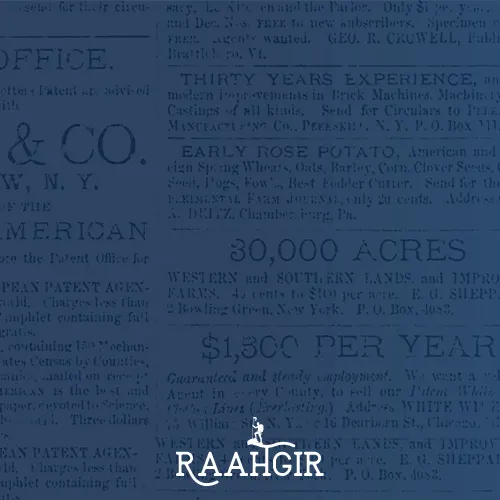
Newsletter
Sign up now!
Be the first one to know all about the Exciting Offers, Travel Updates and more.

B-42, 2nd Floor, Tower- B, The Corenthum, Block A, Sector 62, Noida, Uttar Pradesh 201301
© 2015-2025 JustWravel Pvt. Ltd.
Starts From
₹ 22,500




